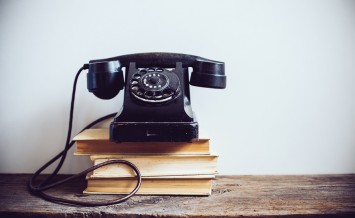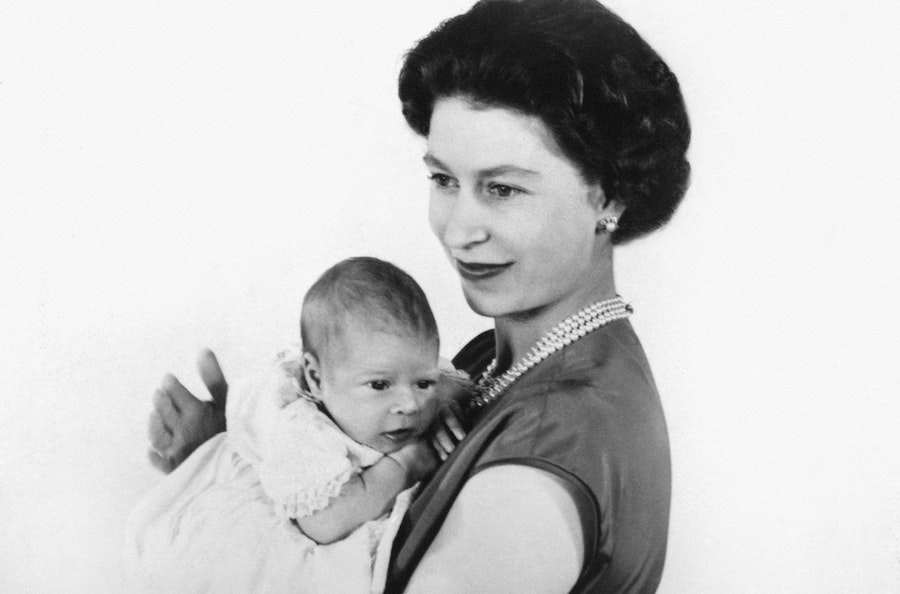From very public to the virtually pain-free: The royal history of giving birth
The Duchess of Cambridge will give birth to her third child in the Lindo Wing of St Mary’s Hospital in London, just as she did with Prince George and Princess Charlotte.
But this is a relatively short tradition for the royal family. Most prince and princesses through history have been born in palaces and castles.
If you think the media circus around royal babies is big now, it’s always been a huge deal – in fact, probably even more so because of the divine power and political importance that was traditionally placed on the monarchy.

Queen Elizabeth II with baby Charles in 1949
16th and 17th century
Back in the 1500s, royal births in Britain were preceded with a royal procession to where they’d give birth, and thousands of members of the public followed. The royal mum-to-be would address the crowds before going inside to give birth. During this time though, giving birth was considered pretty dangerous – many women died in childbirth. Around the time that Queen Elizabeth I was born in 1533, royal women were told to write a will before going into labour.
Protocol at the time was for the room to be kept dark, tapestries were draped over the windows, and very little fresh air allowed in. It was supposed to replicate the womb, but it sounds like a pretty claustrophobic environment for the woman in labour.
18th century

A portrait of Marie-Antoinette who had a large audience for her labour
Until the mid 1700s, childbirth was a women’s business – men were never present. Royal births were also very public, especially in French royalty. It’s been well documented that 200 people watched Marie Antoinette give birth in 1778, and that she was almost crushed by the huge group of people who poured into the bed chamber when the doctor called that the baby was coming. Apparently, people were climbing on furniture to get a better view. In Britain, it was a more modest group, ranging from around 40 people to a handful of VIPs, but most likely strangers to the royal mum-to-be.
19th century

Queen Victoria demanded pain relief during labour and changed everything
There were two schools of thought around this time – intervention and non-intervention. Forceps to help free a stuck baby had been introduced, but were considered controversial. But when Princess Charlotte died in 1817 after giving birth to a stillborn baby following a 50 hour labour, there was a national outpouring of grief. Her physician Sir Richard Croft was criticised for not using forceps, and afterwards they came to be used as standard during tricky births.
Until the mid 19th century Women were given no pain relief during childbirth (the pain was seen as punishment for original sin). Although chloroform was discovered as an effective relief in 1847, it was still seriously frowned upon.
Then Queen Victoria did something pretty important for women everywhere, by demanding pain relief for her eighth labour in 1853. After that, chloroform was used widely to ease the pain, by inhaling it from a handkerchief. It also led the way for other pain relief methods, and royal and noble women were soon seen as too delicate to bear the pain of labour.
Most opted for what was known as ‘twilight sleep’ – a concoction of drugs to make them unconscious for a ‘painless’, drama-free birth. It’s not as blissful as it sounds though, it erased the memory of the birth altogether, but there were reports of women becoming psychotic and screaming in pain under the influence of the drugs, and consequent side effects for babies.
Early 20th century

King George VI and Queen Elizabeth, as they would later become, with baby Elizabeth, the reigning Queen
In 1926 Queen Elizabeth II became the first British monarch to be born in a private house, rather than a palace or a castle, since the Middle Ages, and it was by caesarean section.
Traditionally the home secretary attended royal births (Sir William Joynson-Hicks was present at the Queen’s birth). It was all down to a paranoia that the baby might be swapped, in the instance that the baby was stillborn, so a parliamentary member had to be there to confirm that the newborn was in fact a real heir. This tradition ended in 1936 after the Queen’s cousin Princess Alexandra was born.
Strangely, it was customary for fathers not to attend births. In 1948 Prince Philip did not attend Prince Charles’ birth – he was said to be playing squash, followed by a swim. Like many royal women before her, the Queen was reportedly put in a ‘twilight sleep’ state for the birth, as depicted on the Netflix series The Crown.
Late 20th century to today

Princesss Diana and Prince Charles with baby William
Princess Diana was a true trailblazer in the royal family. She was the first to break royal birth tradition when she opted to have Prince William in a hospital – the private Lindo Wing of St Mary’s in Paddington, west London. And it’s become the new tradition, with The Duchess of Cambridge following suit for her three births. Prince Charles was present for the birth of his two sons and the Duke of Cambridge, of course, followed suit.
Some traditions have never changed though and will continue for the birth of Kate and William’s third child. News of the royal birth will be announced on an easel attached to the railings of Buckingham Palace, and each is usually marked with a gun salute by the King’s Troop Royal Horse Artillery.
The Press Association
Latest posts by The Press Association (see all)
- Beatles documentary Let It Be to be released on Disney+ - April 16, 2024
- How to keep your money safe – as criminals ramp up AI tactics to steal consumer data - April 16, 2024
- Seasoned marathon runners give their best race day tips for first-timers - April 16, 2024
- What are heat pumps and could they help your home save energy? - April 15, 2024
- Trailer for Bridgerton season three teases new friends-to-lovers romance - April 12, 2024





















